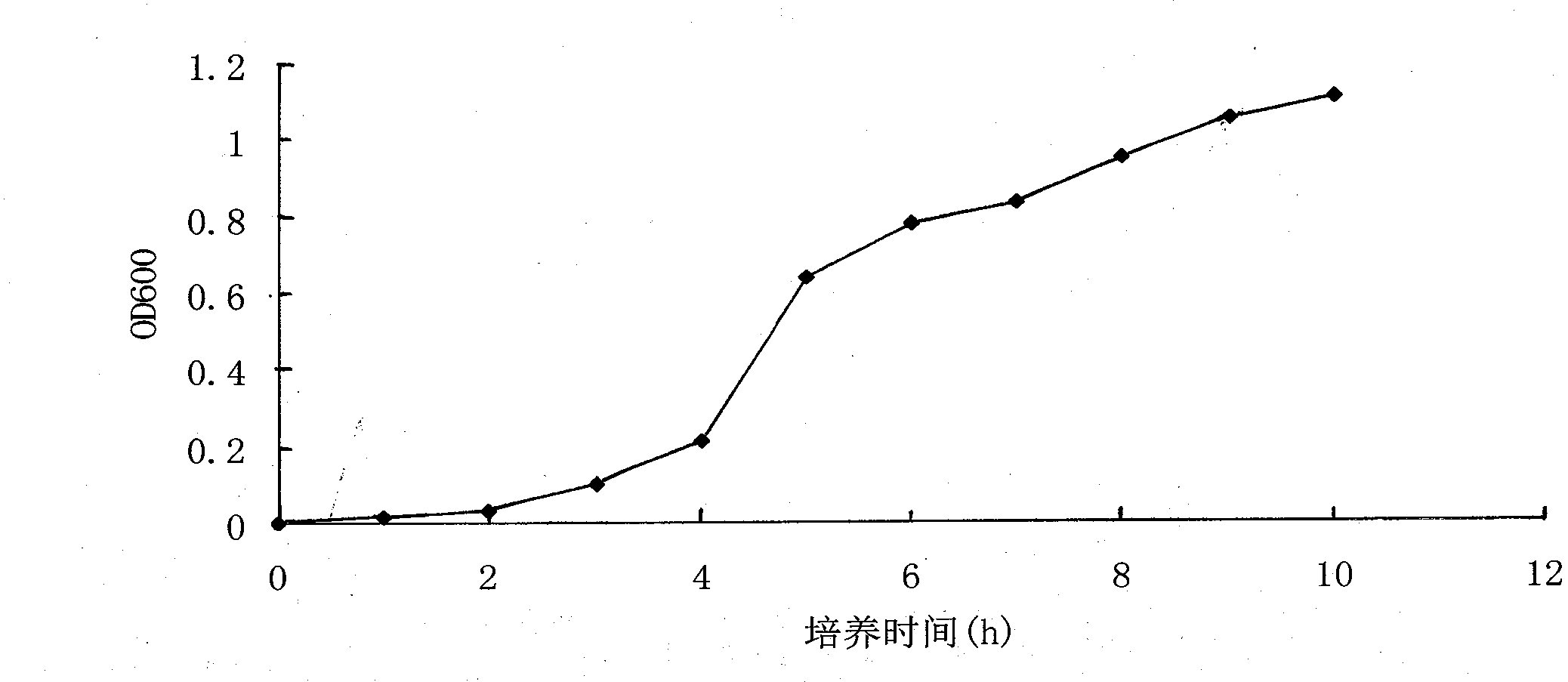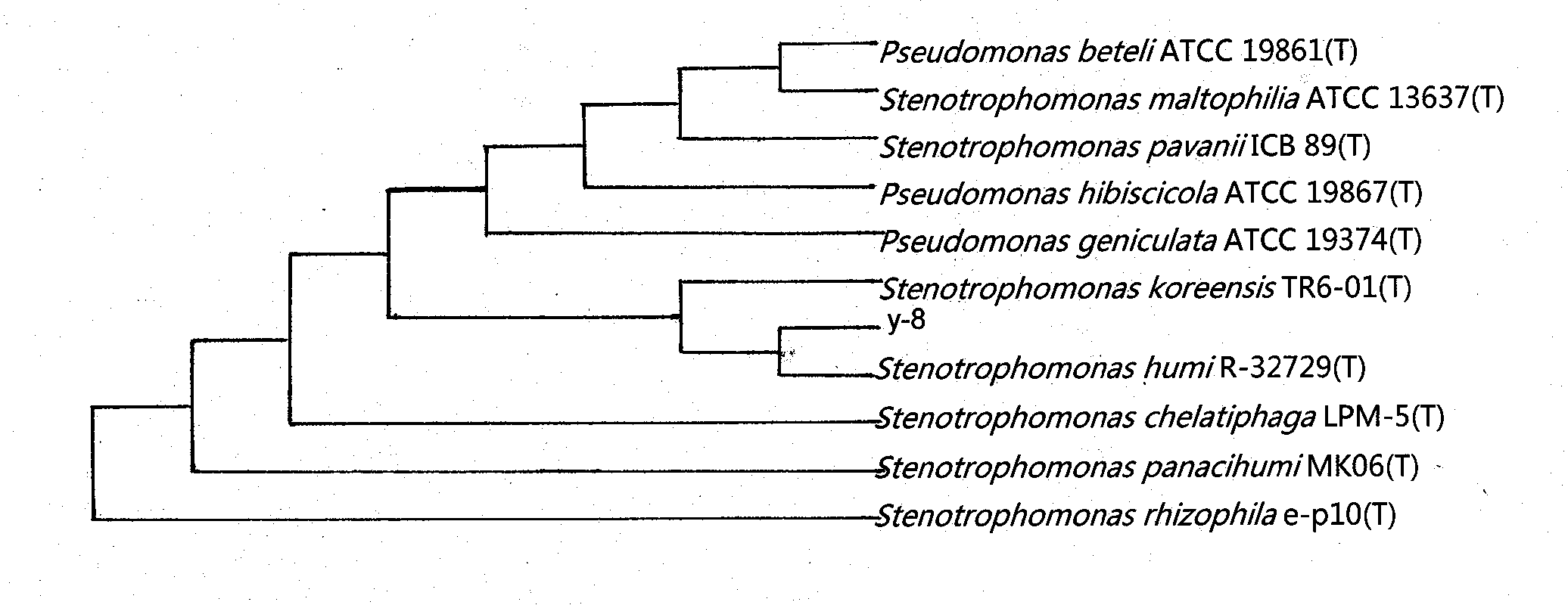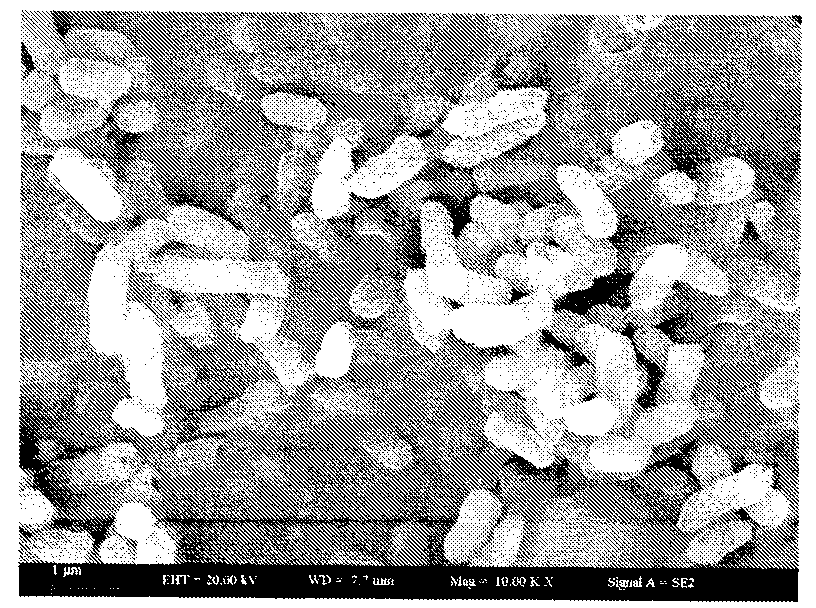Contaminated soil phenanthrene and application thereof in contaminated soil restoration
A technology of polluting soil and degrading bacteria, applied in the restoration of polluted soil, bacteria, and microbial-based methods, etc., can solve problems such as the impact of competition, soil ecological risks, etc.
- Summary
- Abstract
- Description
- Claims
- Application Information
AI Technical Summary
Problems solved by technology
Method used
Image
Examples
Embodiment 1
[0025] Example 1: Pseudomonas geniculata CGMCC No. Isolation, screening and identification of 6763
[0026]Samples were taken from oil-contaminated soil in Karamay Oilfield, 5g soil samples were placed in 50mL phenanthrene inorganic salt medium, 30°C, 150r / min shaking culture, when OD600=0.6-0.8 (bacteria in logarithmic growth phase), transfer Take 1 mL of the culture solution and add it to 60 mL of water-silicone oil dual-phase system culture medium with a p (phenanthrene) of 100 mg / L. Water-silicone oil forms a dual-phase system at a volume ratio of 4:1. Shake at 30°C and 150 r / min in the dark nourish. When the OD600 value of the culture solution is 0.6-0.8, pipette 1 mL of the culture solution and add it to the newly prepared medium containing phenanthrene inorganic salts. The above steps were repeated for a total of 8 generations of enrichment culture.
[0027] Take 1 mL of the enriched culture solution, make a phenanthrene plate, incubate in a 30°C incubator for 7 days...
Embodiment 2
[0038] Example 2: Pseudomonas geniculata CGMCC No. 6763 growth factor
[0039] See the following method, but it should be based on the Pseudomonasgeniculata CGMCC No. provided by the present invention. 6763 is characterized by its specific growth factor.
[0040] The strain y-8 was cultured, and the results are shown in Table 2, and the strain y-8 is the most suitable growth factor.
[0041] Table 2: Effects of temperature, pH, salt, antibiotics on the growth of strain y-8
[0042] temperature(℃) 4 10 15 20 25 30 growing situation + + + ++ +++ ++++ temperature(℃) 35 40 45 50 55 60 growing situation ++ + + - - -
[0043] pH 1 2 3 4 5 6 growing situation - - - - + + pH 7 8 9 10 growing situation ++ + + + NaCl concentration 0.5% 1% 2% 3% 4% 5% growing situation + ++ ++ ++ + - NaCl concentration 6% 7% 8% 9% 10% growing situation ...
Embodiment 3
[0044] Example 3: Determination of Pseudomonas geniculata CGMCC No.6763 on the degradation performance of phenanthrene
[0045] Inoculate Pseudomonas geniculata (Pseudomonas geniculata) CGMCC No.6763 into inorganic salt medium containing 100 mg / L phenanthrene, culture at 150 rpm / min, shaker at 30°C in the dark, at the 0th, 8th, 16th, Samples were taken at 24, 32, 40, 48, 56, 64, 72, and 80 hours respectively to determine the bacterial density and phenanthrene residue rate in the culture solution. For the experimental results, see the attached Figure 4 . attached by Figure 4 It can be seen from the degradation curve of phenanthrene that at the initial concentration of 100mg / L, the degradation of phenanthrene is slow in the initial stage of 0-16h, and the degradation of phenanthrene is very fast in the next 16-64h. By 72h, the degradation amount of phenanthrene has reached 91.22mg. Also, see attached Figure 4 The cell growth curve shows that the cell growth is a little sl...
PUM
 Login to View More
Login to View More Abstract
Description
Claims
Application Information
 Login to View More
Login to View More - R&D
- Intellectual Property
- Life Sciences
- Materials
- Tech Scout
- Unparalleled Data Quality
- Higher Quality Content
- 60% Fewer Hallucinations
Browse by: Latest US Patents, China's latest patents, Technical Efficacy Thesaurus, Application Domain, Technology Topic, Popular Technical Reports.
© 2025 PatSnap. All rights reserved.Legal|Privacy policy|Modern Slavery Act Transparency Statement|Sitemap|About US| Contact US: help@patsnap.com



